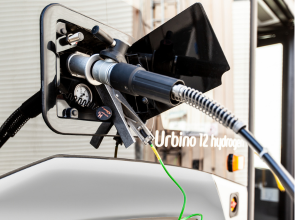India launches hydrogen-powered vehicle project
A first of its kind project in India aimed to support hydrogen FCEV technology and disseminate its benefits.

India Minister for Road Transport and Highways Shri Nitin Gadkari today (16th March) has launched a pilot project for hydrogen-based advanced Fuel Cell Electric Vehicle (FCEV) Toyota Mirai at New Delhi, India.
Toyota Kirloskar Motor Pvt Ltd and International Center for Automotive Technology (ICAT) are conducting a pilot project to study and evaluate the world’s most advanced Fuel Cell Electric Vehicle (FCEV), hydrogen-powered Toyota Mirai, on Indian roads and climatic conditions.
This is a first of its kind project in India that aims to create a green hydrogen-based ecosystem by creating awareness about the unique application of green hydrogen and FCEV technology.
It is an important initiative that will promote clean energy and environmental protection by reducing dependence on fossil fuels to make India’ Energy Self-reliant’ by 2047,
Green Hydrogen can be generated from renewable energy and abundantly available biomass. Introduction and technology adoption to tap into the Green hydrogen’s potential will play a key role in securing a clean and affordable energy future for India.
Electrocatalyst system for energy-efficient hydrogen production
Early this month, Indian Scientists designed an electrocatalyst system for energy-efficient hydrogen production with the help of the electrolysis of urea. The urea electrolysis is helpful towards urea-based waste treatment with low-cost hydrogen production. This can be used for energy production in India
The energy requirement for hydrogen production through water electrolysis can be reduced by 70% through urea electrolysis. The energy-intensive counterpart of water splitting, oxygen evolution, can be replaced with urea oxidation in urea electrolysis. The low-cost, earth-abundant Ni-based catalysts are widely applied for this process. The main challenge associated with urea oxidation is retaining the prolonged activity of the catalyst as the strong adsorption of the reactive intermediate (COx) on the active site, referred to as catalyst poisoning, causes activity loss.
The urea electrolysis is helpful towards urea-based waste treatment with low-cost hydrogen production.
